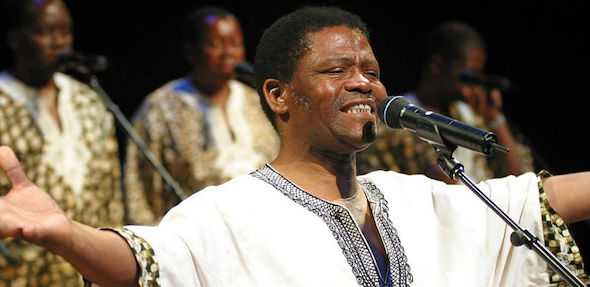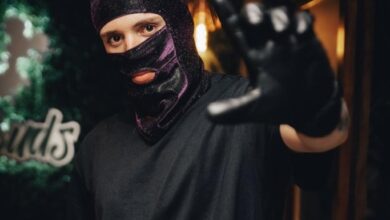Top 10 things You Might Have Known About Joseph Shabalala & Ladysmith Black Mambazo

Top 10 things You Might Have Known About Joseph Shabalala & Ladysmith Black Mambazo – After five decades as an active musician, Shabalala announced his retirement in 2013.
Ladysmith Black Mamba has toured the world sharing the stage with global hitmakers.
We leave legacies in the every day with the people we brush up against. These ‘legacies’ are never intended as such and most of the time they’re just kind things done in the flow of life.
Joseph and the group as a whole have created music that touches us and that is often through memories. It’s so easy to associate their songs with people, events and memories. This has transformed how music is perceived in South Africa Hearing most of their songs can immediately bring you to a certain place or time. It can be hard to believe how great of an influence this group has had over the years.
Check out the top 10 things that you might have known, or perhaps not about the late Joseph Shabala and the group, Ladysmith Black Mambazo.
- Born in 1941, Shabalala was one of eight children in a family that lived on a farm near the town of Ladysmith, South Africa. As the oldest boy, it was Joseph’s duty to take care of the family after his father died, and he eventually took up factory work.
2. His first musical experience, save for a bit of fooling around on the guitar, came with a choral group called the Blacks.
3. Joseph Shabalala, who claimed that he heard the vocal harmonies the group became famous for in a dream, formed Ladysmith Black Mambazo in 1960. He recruited his brothers, Headman and Joseph, and his cousins Albert and Abednego Mazibuko.
4. Ladysmith Black Mambazo, South African music group founded in 1964 byJoseph Shabalala, a young musician who hoped to bring new interpretations to traditional Zulu music.
5. The Blacks won the majority of the local vocal competitions and became the most popular Zulu vocal group, but Shabalala felt that something was missing. Joseph converted to Christianity in the mid-1970’s the group shifted their focus to gospel music. Blending the choral music he heard in the Christian church with multiple elements of the Zulu tradition not typically combined, he forged his own style
6. The name that Shabalala chose for the group—Ladysmith Black Mambazo—was significant on a number of levels: Ladysmith was the name of the farming village in which he lived, Black represented the black oxen that were the strongest on the farm, and Mambazo, from the Zulu word for “axe,” symbolized the group’s ability to cut down the competition.
7. In 1973 Ladysmith Black Mambazo released Amabutho, the first African album to reach gold record status (25,000 sold).
8. The group gained worldwide recognition from its 1986 collaboration with American singer-songwriter Paul Simon on his Grammy Award-winning Graceland, one of the best-selling albums of the 1980s, and in 1987 Ladysmith Black Mambazo won its own Grammy in the best traditional folk recording category for the album Shaka Zulu. The group has won five Grammy Awards.
9. The group had recorded more than 30 albums, including Induku Zethu (1987), Inala (1987), Liph’Iqiniso (1994), and In Harmony (1999), which altogether had sold more than 30 million records around the world, establishing it as the best-selling musical group in Africa.
10. Ladysmith Black Mambazo founder Joseph Shabalala has died. The 78-year-old lead singer of the global iconic Ladysmith Black Mambazo died on Tuesday, 11th of February 2020 morning after a long illness.




